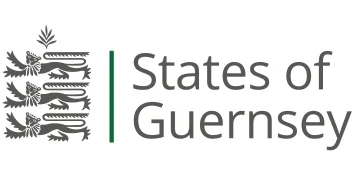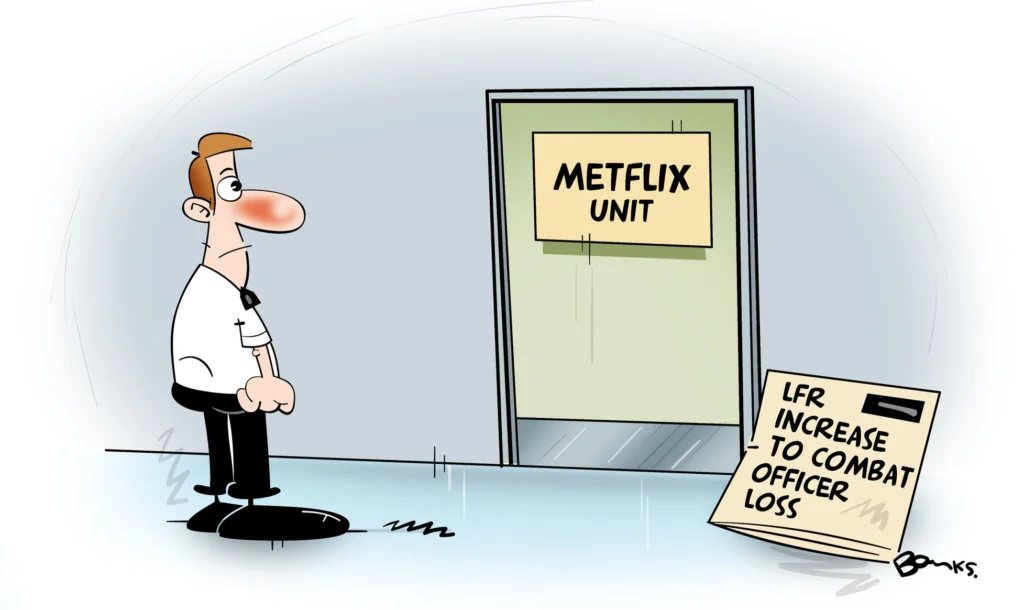Article
St George’s Day celebrations and ‘two tier’ policing

Chris Hobbs attends this week's St George's Day events which featured episodes of disorder and renewed accusations of 'two tier' policing.
The experienced sergeant of the elite British Transport Police Operational Support Unit (OSU) was quick to allay my concerns over the events that had, a short time previously, taken place in Whitehall on St. Georges Day.
“Sometimes it’s best to step back and let things cool off,’ was his opinion on the incident described below.
The day had begun in orderly fashion. Those marching were told to meet at Waterloo Station from midday with a view to leaving at 1pm for a march to Whitehall. Individuals and groups duly assembled amidst a plethora of St. George’s flags and at 12.58 began marching. The march was orderly and those participating kept to the pavements ensuring that the traffic wasn’t obstructed. The route they took was the shorter of two possibilities in that they went across Westminster Bridge as opposed to Waterloo Bridge which would have meant walking along the Strand: This would have been agreed with the Met.
My one concern was the fact that the marchers would arrive at the designated area for the rally with a considerable interval before the advertised start time of 3PM. However, as all had gone as well as it could I drifted away and missed one of the main events.
Push and shove on Whitehall
It would seem that those who arrived early grouped up and began to walk away from the designated rally area towards Trafalgar Square to the extent that it looked like, or actually was, a march which breached the conditions that the organisers had agreed with the police.
Officers therefore, I believe, formed what appears to have been a filter cordon across Whitehall. This would have allowed those arriving to pass through but keep any authorised marches away from the designated area. A number of marchers tried to force their way through the police cordon which resulted in a session of push and shove between marchers, officers and horses complicated by pushing and shoving from those coming down from Whitehall. This explains my bewilderment, voiced on ‘X’ (twitter) at the cordon when I arrived back from my ‘wanderings;’ however the protagonists had gone down to the rally area and I remained blissfully unaware of the incident until I was shown the disorder later via a mobile phone.
While those on the far right have made great play of this incident as an example of police brutality, the fact that officers didn’t feel the need to draw their batons perhaps illustrates the level of disorder; it appears there were no injuries of note.

Tommy Robinson takes centre stage
Walking back down to the rally, crowds were being ushered from out of the road so the traffic towards Parliament square could get moving. The rally itself went without any undue issues. Word spread amongst police and the crowd that Tommy Robinson had earlier, as predicted, been acquitted in what appears a shambolic prosecution for a public order offence. He received a messiah like reception and his speech, in part, referred to a forthcoming ‘patriots protest,’ on the 1st of June. He also made in clear he was less than impressed with politicians and Parliament. He then left, walking down Whitehall amidst that which resembled a rugby scrum. As the rally concluded, thanks were issued from the stage to individuals and organisations and included the Metropolitan Police.
Appropriate music followed as the crowds slowly drifted away. Some running police were observed further up Whitehall and on arrival photo-journos and myself found a man ‘cuffed.’ There seemed to have been some sort of incident which involved mounted officers, an unmarked police car and a fairly cheerful prisoner who was the worse for drink. In any event it was one arrest and I, and the photo-journo’s drifted back to Downing Street. Some 30 minutes later, I decided enough was enough and set off for home, however, as I walked up Whitehall, I noticed blue lights and then the fact that there was a crowd in the road in the area where four public houses are located.
Drunken disorder
As I approached, it was clear that there had been disorder and the crowd, clearly the worse for drink, were berating and pushing officers. One man was on the floor being restrained by officers and it was obvious that there had been an incident. More police arrived whilst the foul-mouthed invective was directed in abundance against officers; several missiles were thrown in their direction. The situation looked ugly and didn’t ease when the prisoner was removed. Officers then were pulled back to the opposite side of the road where the abuse continued. The City police serial had now arrived and joined their Met colleagues in being on the receiving end of drunken foul-mouthed threatening intimidation.

After about ten minutes the smartly turned out City officers formed up, turned around and returned to their carriers followed by a jeering crowd who clearly saw this as some sort of victory. Another ‘face to face,’ confrontation occurred by the carriers before the officers, exercising considerable restraint, boarded them and left.
I then began to walk back to Downing Street on the opposite side of the road to the pubs when I saw a bloodied, distressed elderly man in an England polo shirt accompanied by a younger female in an England top who I assumed was his daughter. With the first aid kit that I habitually carry, we cleaned him up.
It seems they were standing outside the Clarence pub, when a ‘patriot,’ came up and punched the man in the face. This was seen by police officers who pounced and arrested the assailant however, this arrest sparked the indignant crowd which would appear to have resulted in disorder referred to above.
According to the victim and the female, the police were ‘brilliant.’ The victim was 70-years-old.
Shortly after that, with the traffic now flowing, all police had left the scene which looked to the jubilant crowd like an abject retreat. However, as was later pointed out to me by the above-mentioned OSU sergeant, taking action to allow a cooling of tempers is sometimes a wise tactic. In fact, the hostile crowd rapidly dissipated into smaller groups with a number of individuals making their way to Nelson’s Column where, displaying numerous flags, they danced, sang and drunkenly fell out with each other.
The Met later reported that a small group marching along the Strand were dispersed by officers. In all six arrests were made but the ‘pushing and shoving’ incident dominated the right- wing media such as GB News and Talk TV and the far-right social media with once again cries of two- tier policing.
‘Two tier policing’

One example of the far-right’s use of misleading clips of incidents can be seen across twitter under the heading of ‘two tier,’ policing. The first clip shows police facing an unseen hostile crowd and being pelted with missiles during the Islamic Eid celebration in Southall. This purported to illustrate the fact that the police refuse to take action against Muslims. The second linked clip shows the pushing and shoving Whitehall incident that portrayed the police’s so-called brutal treatment of British patriots.
In fact, the officers in Southall were, in the main, community officers who were policing an event that is normally low risk in terms of disorder. A crowd of several hundred however gathered and some within it threw missiles at the officers who were clearly outnumbered. Properly equipped officers in that which is termed ‘riot gear,’ were called in and the matter quickly resolved.
It will be noted that the officers at Southall had rightly drawn batons; there were no batons drawn in the footage of Whitehall incident, just pushing and shoving as marchers tried to force their way through a police cordon. Indeed, I saw no batons drawn at all during the day. I suspect, if an identical scenario had been played out in any European city the end result would have been far different yet the myth of ‘two tier,’ policing remains unchallenged by the media.
Future dates and pressures

As has been pointed out, one major difference between ‘patriotic’ protests and those that are pro-Palestinian is that alcohol is never an issue with the latter. Perhaps, given how the nature of those who attended the rally and then the pubs, changed over such a short period of time, the deployment of detector dogs on June 1st might answer the speculation as to whether illicit substances are also involved.
Police may now be faced with a further challenging day on Saturday when there is yet a further ‘national.’ Pro-Palestinian march in London. The individual involved in the headline making confrontation with the Met police sergeant as he tried to ‘walk with’ the pro-Palestinian protesters, is stating that he has ‘signed up,’ 1,500 volunteers to do likewise. This, of course, as opposed to a controlled static counter-protest, could lead to disorder which may be especially problematic due to the number of children that can be seen at these events.
Presumably the final objective of this tactic would be to ensure that these marches are banned but, inevitably, if this plan goes ahead and disorder/arrests are the result, the Met will, yet again, be savaged by all sides and further demands will be made for Sir Mark Rowley’s resignation. Then the Met can look forward to June 1st which is being billed as a war between Tommy’s patriotic ‘football lads’ under the banner of ‘We want our country back’ and the police.
Chris Hobbs is a former Special Branch officers who follows big public order operations for Police Oracle as an observer.
Advertisement
Job of the week
Superintendent/Detective Superintendent

- States of Guernsey
- Guernsey
- Grade: - Superintendent Salary Scale - £97,110 - £113,046
The States of Guernsey are looking for Superintendents to join their team within Bailiwick of Guernsey Law Enforcement. The Superintendent role forms part of the Senior Leadership Team of Bailiwick Law Enforcement. There are two Superintendent roles within Guernsey Police and the Superintendents will be responsible for the day-to-day delivery of policing functions across the Bailiwick, in accordance with the direction set by the Chief Officer and Deputy Chief Officer, and the aims and objectives set out in Guernsey Police’s Service Delivery Plan.
Read more

